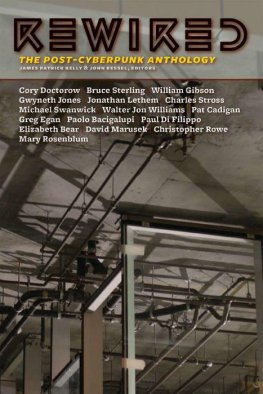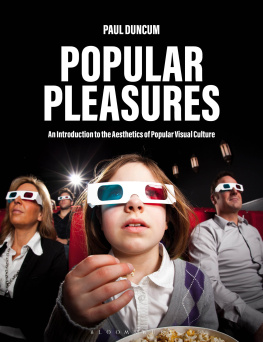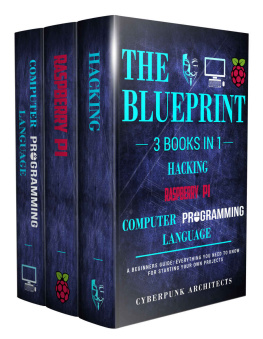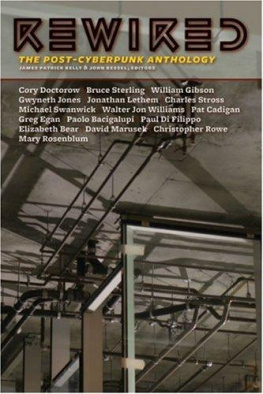
Cyberpunk and Visual Culture
Within the expansive mediascape of the 1980s and 1990s, cyberpunks aesthetics took firm root, relying heavily on visual motifs for its near-future splendor saturated in media technologies. As todays realities look increasingly like the futures of science fiction, cyberpunk speaks to our contemporary moment and as a cultural formation dominates our 21st century techno-digital landscapes.
The 15 essays gathered in this volume engage the social and cultural changes that define and address the visual language and aesthetic repertoire of cyber-punkfrom cybernetic organisms to light, energy, and data flows, from video screens to cityscapes, and more. Cyberpunk and Visual Culture provides critical analysis, close readings, and aesthetic interpretations of those visual elements that define cyberpunk today, moving beyond the limitations of printed text to also focus on the meaningfulness of images, forms, and compositions that are the lifeblood of cyberpunk graphic novels, films, television shows, and video games.
Graham J. Murphy is Professor with the School of English and Liberal Studies at Seneca College (Toronto). He co-edited Beyond Cyberpunk: New Critical Perspectives (2010), co-authored Ursula K. Le Guin: A Critical Companion (2006), and has authored numerous articles for anthologies and top peer-review journals.
Lars Schmeink is Professor of Media Studies at the Institut fr Kultur- und Medienmanagement Hamburg and is currently the president of the Gesellschaft fr Fantastikforschung. He is the author of Biopunk Dystopias: Genetic Engineering, Society, and Science Fiction (2016), and has published in Science Fiction Studies , Science Fiction Film and Television and Journal for the Fantastic in the Arts .
Cyberpunk and Visual Culture
Edited by Graham J. Murphy
and Lars Schmeink
First published 2018
by Routledge
711 Third Avenue, New York, NY 10017
and by Routledge
2 Park Square, Milton Park, Abingdon, Oxon OX14 4RN
Routledge is an imprint of the Taylor & Francis Group, an informa business
2018 Taylor & Francis
The right of the editors to be identified as the authors of the editorial material, and of the authors for their individual chapters, has been asserted in accordance with sections 77 and 78 of the Copyright, Designs and Patents Act 1988.
All rights reserved. No part of this book may be reprinted or reproduced or utilised in any form or by any electronic, mechanical, or other means, now known or hereafter invented, including photocopying and recording, or in any information storage or retrieval system, without permission in writing from the publishers.
Trademark notice : Product or corporate names may be trademarks or registered trademarks, and are used only for identification and explanation without intent to infringe.
Library of Congress Cataloging-in-Publication Data
Names: Murphy, Graham J., 1970 editor. | Schmeink, Lars, editor.
Title: Cyberpunk and visual culture / edited by Graham J. Murphy and Lars Schmeink.
Description: New York: Routledge, 2018.
Identifiers: LCCN 2017018657 | ISBN 9781138062900 (hardback) | ISBN 9781138062917 (pbk.) | ISBN 9781315161372 (eBook)
Subjects: LCSH: Cyberpunk culture.
Classification: LCC HM647 .C93 2018 | DDC 306/.1dc23
LC record available at https://lccn.loc.gov/2017018657
ISBN: 978-1-138-06290-0 (hbk)
ISBN: 978-1-138-06291-7 (pbk)
ISBN: 978-1-315-16137-2 (ebk)
Typeset in Bembo
by Apex CoVantage, LLC
To Jennifer and Declan
for showing me what love and life are truly all about your support is always inspiring
GJM
To Julia
for taking it all in stride with me and
never letting me falter
LS
Contents
Christian Hviid Mortensen
Timothy Wilcox
Graham J. Murphy
Stina Attebery and Josh Pearson
Pawe Frelik
Christopher McGunnigle
Ryan J. Cox
Mark R. Johnson
Stephen Joyce
Jenna Ng and Jamie Macdonald
Evan Torner
Mark Bould
Anna McFarlane
Sherryl Vint
Lars Schmeink
The editors would like to thank Seneca Colleges School of English and Liberal Studies (Faculty of Business) for its financial assistance on this project.
All video game, television, and film images reproduced for academic use under Fair Use guidelines. Otherwise, permission to reprint visual images is gratefully acknowledged.
Cyberpunk 2020 by Mike Pondsmith (writer), courtesy of R. Talsorian Games, Inc. and CD Project S.A.
Do Androids Dream of Electric Sheep? by Philip K. Dick (writer), Tony Parker (illustrator), and Scott Keating (illustrator, Cover B: Issue #8), courtesy of the Philip K. Dick Trust.
ROBOCOP TM & 1987 Orion Pictures Corporation. [Mar. 1990 Jan. 1992] Metro-Goldwyn-Mayer Studios Inc. All Rights Reserved.
The Surrogates by Robert Venditti (writer) and Brett Weldele (illustrator), courtesy of Top Shelf Productions.
TRANSMETROPOLITAN Warren Ellis and Darick Robertson. All characters, the distinctive likenesses thereof, and all related elements are trademarks of Warren Ellis and Darick Robertson.
Stina Attebery is a PhD candidate in English at the University of California at Riverside whose dissertation focuses on climate change and biopolitics in indigenous science fiction. She has published articles in Humanimalia , Extrapolation , and Medical Humanities . She serves as an editor for the Eaton Journal of Archival Research in Science Fiction and editorial assistant for SAIL: Studies in American Indian Literatures, and is a recipient of a Sawyer Fellowship for the 201516 Sawyer Seminar on Alternative Futurisms.
Mark Bould is a Reader in Film and Literature at UWE, Bristol, and founding co-editor of the journal Science Fiction Film and Television . He is the author of Film Noir: From Berlin to Sin City (2005), The Cinema of John Sayles: Lone Star (2009), Science Fiction: The Routledge Film Guidebook (2012), and Solaris (2014), and co-author of The Routledge Concise History of Science Fiction (2011). He is editor of Africa SF (2013), and co-editor of Parietal Games: Critical Writing By and On M. John Harrison (2005), The Routledge Companion to Science Fiction (2009), Fifty Key Figures in Science Fiction (2009), Red Planets: Marxism and Science Fiction (2009), Neo-Noir (2009), SF Now (2014), and Illuminating the Object: Essays on M. John Harrison (forthcoming).
Scott Bukatman is a cultural theorist and Professor of Film and Media Studies at Stanford University. His research explores how such popular media as film, comics, and animation mediate between new technologies and human perceptual and bodily experience. His books include T erminal Identity: The Virtual Subject in Postmodern Science Fiction (1993), one of the earliest book-length studies of cyberculture; a monograph on the film Blade Runner (1997) commissioned by the British Film Institute; and a collection of essays, Matters of Gravity: Special Effects and Supermen in the 20th Century (2003).
Ryan J. Cox teaches literature and film at Keyano College in Fort McMurray, Alberta. He holds a PhD in English Literature from the University of Minnesota, and his research focuses on the intersections of identity, culture, and poetics. His writing has appeared in Jim Henson and Philosophy (2015), Canadian Literature, The Journal of Graphic Novels and Comics, English Studies in Canada , Carousel, and The Windsor Review.











